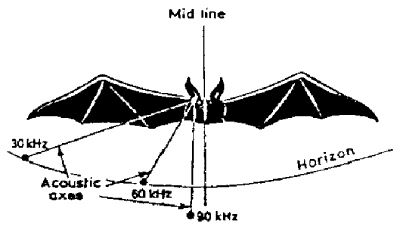 |
Science Frontiers ONLINE No. 36: Nov-Dec 1984 |
|
|
Four 'clever' adaptations
According to theory, many butterflies have wing patterns that evolved in response to predation. Some wing patterns blend into the background, making the butterfly hard to spot; other wings have prominent eyespots that are supposed to deter predators or trick them into striking at the wings instead of the soft, vulnerable body. But some tropi cal butterflies have a double problem; their predators change from dry to wet season. One butterfly, Orsotriena medus, masters this situation by changing wing patterns with the season. In the dry season, it is dark brown and inconspicuous; in the wet season, it switches to black wings with ostentatious eyespots and white bands.
(Anonymous; "Cryptic Butterflies," New Scientist, 20, September 13, 1984.)
The Asiatic freshwater clam has spread rapidly across North America since its accidental introduction about 50 years ago. In addition to its natural dispersal via its more mobile larvae, the young adult clams have a surprising method of hitchhiking rides on the water currents. Through their siphons they deploy long mucous threads. Water currents pull on these threads just as air currents catch the silken threads of migrating spiders. Given a water current of 10-20 cm/sec, the small clams manufacture and deploy their threads, and off they go downstream.
(Prezant, Robert S., and Chalermwat, Kashane; "Flotation of the Bivalve Corbicula Fluminea as a Means of Dispersal," Science, 225:1491, 1984.)
Australia boasts many peculiar animals and plants. One of these is an orchid that grows underground. Obviously this orchid cannot employ photosynthesis. Rather, it grows in conjunction with a fungus that obtains nutrients from surrounding roots. The fungal threads penetrate both roots and orchids. The orchids make ends meet by systematically killing and digesting the nutrient-laden fungal threads. When the orchid flowers, it pushes toward the surface just enough to open some tiny cracks in the earth. In these cracks, still below the surface, appear the tiny burgundy red flowers. These flowers are pollinated by minute flies, but just how the orchid's seeds are dispersed is still a mystery.
(Cooke, John; "Hidden Assets," Natural History, 93:75, October 1984.)
Bats navigate by somehow constructing an image of the external world from the echoes of their squeaks. Since bats have but two ears, one wonders how they can develop a three-dimensional image from a two-dimensional sensor; ie., two ears give right-and-left information only. The moustache bat makes up for this deficiency by generating echo-locating pulses at three distinct harmonics: 30, 60, and 90 kilohertz. Its external ears are so shaped that each of these three frequencies has a different acoustic axis, giving the bat in effect three separate sets of ears pointing in three different directions. Inside the bat's head, in the inferior colliculus of the brain, are three sepa rate sets of neurons sensitive to the three different frequencies. No one knows how the bat processes such information into a "display" it can use in swooping after insects at night.
(Anonymous; "The Ins and Outs of a Bat's Ears," New Scientist, 20, August 30, 1984.)
Reference. For more on bat navigational prowess, see section BMT3 in our catalog: Biological Anomalies: Mammals II. This volume is described here.
 | The three acoustic axes of the moustache bat. |